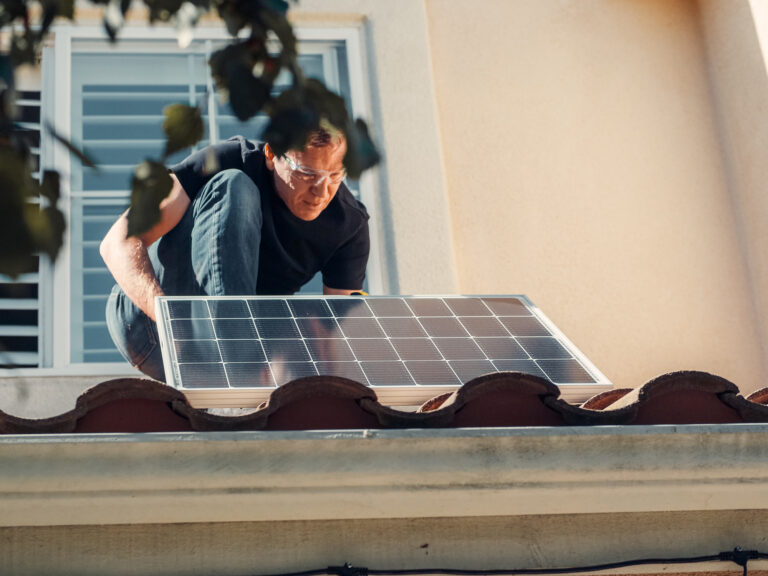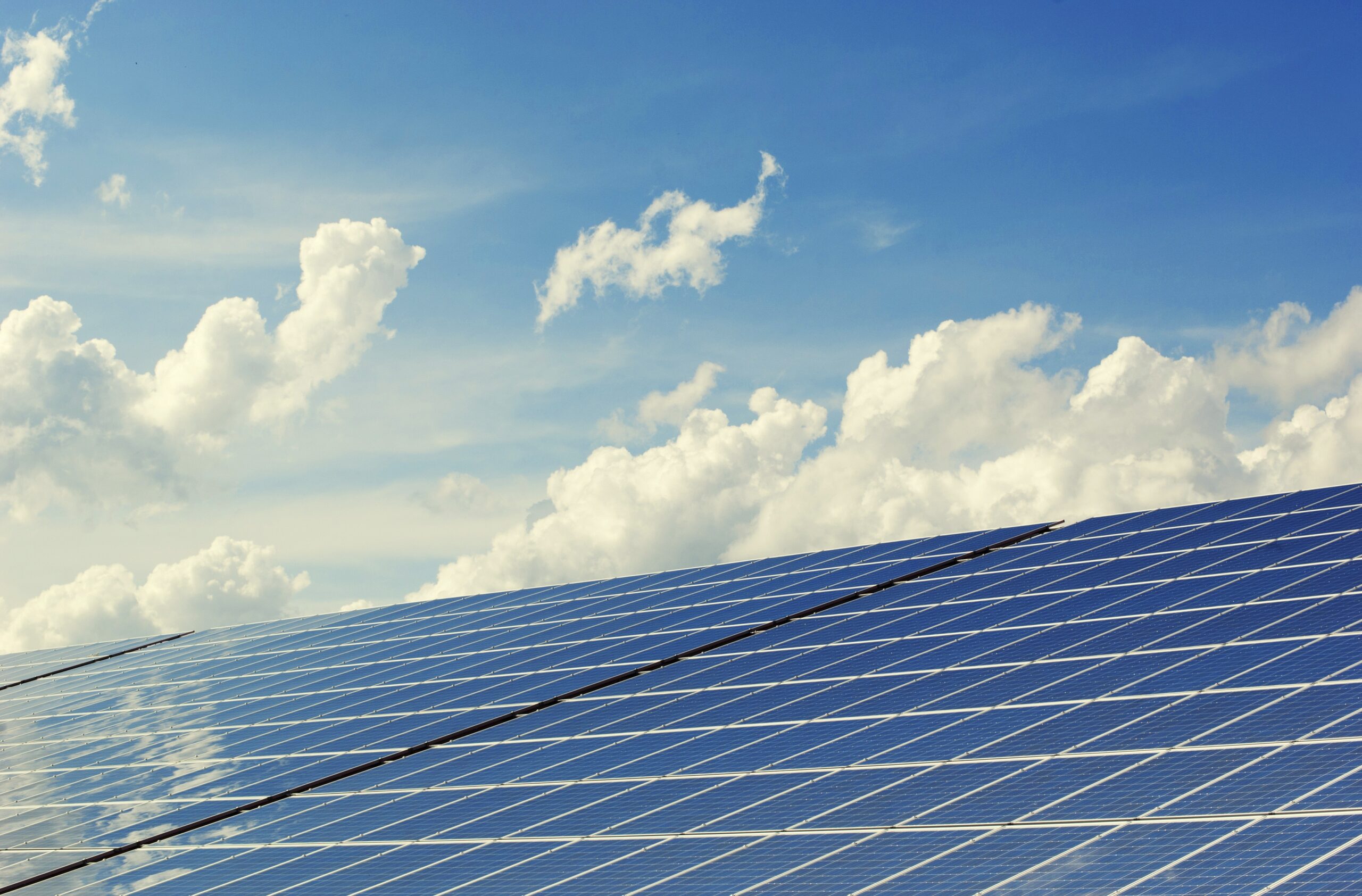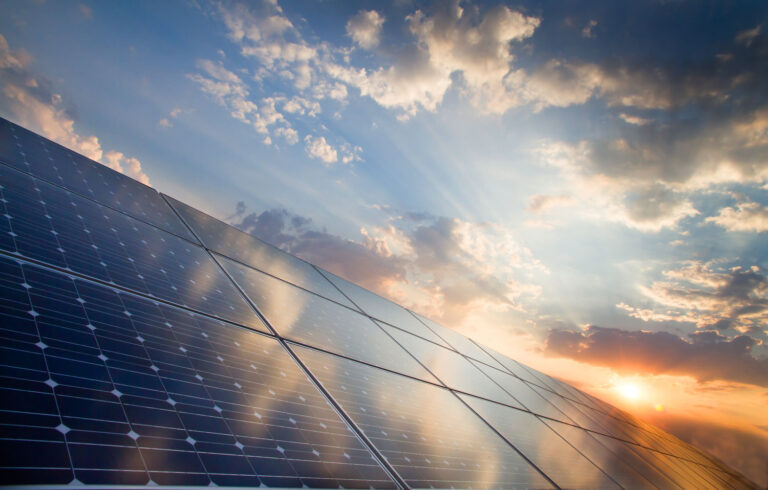Pholta Green
← You can swipe left and right →
Photovoltaic (PV) cells, or solar cells, are devices that convert sunlight directly into electricity. Made from semiconductor materials, they absorb photons from sunlight, dislodging electrons and generating electricity. Individual PV cells produce 1-2 Watts of power, sufficient for small devices. These cells are combined into panels, which can be further grouped into arrays to generate more electricity. PV systems generate direct current (DC) electricity, which can be converted to alternating current (AC) using inverters. Efficiency of PV cells has improved over the years, with state-of-the-art modules reaching up to 25% efficiency. Optimal performance is achieved when panels face the sun directly.
A photovoltaic cell is made up of multiple layers, with the semiconductor layer being crucial for converting sunlight into electricity via the photovoltaic effect. This layer includes p-type and n-type semiconductors that create an electric field at their junction, driving electron movement and generating current. Conducting layers collect this electricity, with an anti-reflection coating on the front side to minimize reflection losses. The efficiency of PV cells is limited by the inherent properties of silicon, which can only convert a portion of solar energy into electricity due to its band-gap energy. Efficiency improvements come at higher costs, involving purer materials, advanced semiconductors, or additional layers. PV cells also degrade over time, typically at a rate of 0.5% per year.
Silicon solar cells are made using single crystal wafers, polycrystalline wafers, or thin films. Single crystal wafers, which are very pure and expensive to produce, are sliced from a large crystal. Although more efficient, single crystal cells are often replaced with multicrystalline cells to reduce costs. Crystalline silicon cells dominate the market due to their efficiency and long lifespan, with production efficiencies approaching 18%. Amorphous silicon cells are cheaper but less efficient, suitable for consumer products. New thin film technologies, like cadmium telluride and copper indium gallium diselenide, offer low costs and acceptable efficiencies. High-efficiency cells made from materials like gallium arsenide are used in specialized applications, such as satellites. To enhance efficiency, solar cells use antireflection coatings and various semiconductor structures to minimize losses.
Solar panels absorb solar energy through PV cells made of semi-conducting materials like silicon. These cells generate direct current (DC) electricity when energized by sunlight, which is then converted to alternating current (AC) by an inverter for household use. Solar panels can function even on cloudy days, though more sunlight increases electricity production. Panels can be installed on flat roofs if angled correctly and weighted down to avoid roof damage. Installation costs vary based on system size, roof accessibility, and whether panels are integrated into the building. Maintenance is minimal, involving regular checks for shading and occasional cleaning. For more details, click the button below.
Photovoltaic (PV) cells are manufactured using various materials and methods. Silicon is the most common, found in both monocrystalline and polycrystalline forms, known for high efficiency and durability. Thin-film PV cells, made from materials like cadmium telluride (CdTe) and copper indium gallium selenide (CIGS), offer flexibility but typically lower efficiency. Perovskite cells, with rapid efficiency improvements, require further development for long-term stability. Organic PV cells, while less efficient, are cost-effective and versatile. Quantum dot cells are easy to manufacture but currently inefficient. Multi-junction PV cells, combining multiple semiconductors, achieve high efficiencies but are costly. Concentration PV cells focus sunlight to enhance efficiency but face economic challenges.
Solar cells convert sunlight into electricity using p-type and n-type silicon. Light ionizes silicon atoms, creating positive and negative charges that generate power when they move through an external circuit. Efficiency depends on the material, sunlight wavelength, and intensity. Single crystal silicon cells are about 25% efficient, while polycrystalline and amorphous silicon cells are less efficient. Power output varies with sunlight intensity but is unaffected by cell size. To maximize output, cells should face the sun directly, though high temperatures can decrease efficiency.
How Renewable Energy Defeats Non-renewables

When comparing energy resources, there are many disadvantages for the non-renewables which can not be replenished in many lifetimes, such as: producing greenhouse gases, rising cost, the residual products are generally non-biodegradable, cause air pollution and acid rain, deplete ozone layer and engender water pollution. On the contrary renewable energy sources are reliable, will not run out, are environmentally friendly and are cost efficient
What Makes Solar Energy Popular?
According to the US Office of Energy Efficiency &Renewable Energy, “As a renewable source of power,solar energy has an important role in reducing greenhouse gas emissions and mitigating climate change, which is critical to protecting humans, wildlife, and ecosystems.
Solar energy can also improve air quality and reduce wateruse from energy production.”The popularity of solar power worldwide has been increasing, and the industry is expected to grow to 20.5% from 2019 to 2026. There are several benefits offered by using solar power, convincing people to shift to clean energy
What is a PhotoVoltaic Panel?
Photovoltaic Panel application is mainly to increase efficiency and performance, and improve reliability of PV technologies, in
order to support the widespread deployment of electricity
produced directly from sunlight.
Photovoltaic glass (PV glass) is a cutting-edge technology that enables the conversion of light into electricity.
To make this energy conversion , the glass incorporates
transparent semiconductor-based photovoltaic cells, which are also known as solar cells. The two sheets of glass will cover the
cells in between. When light shines on a photovoltaic (PV) cell that light may be reflected, absorbed, or pass right through the
cell. The solar cells will absorb sunlight (photons) and convert them into power (electrons).
The Significant advantage of the glass is to provide thermal and sound insulation, ensuring great filtering power as 99% of UV
harmful radiation and up to 95% of IR radiation can be
absorbed.
Photovoltaic Glass vs Solar Panels
- These two products do not compete, instead, they may complement each other.
- Solar panels and concentrating solar-thermal power installations require the use of land, sites need to be selected, designed, and managed to minimize impacts to local wildlife, wildlife habitat, and soil and water resources; however, the PV Glass can be applied on different conditions and placements on buildings such as balconies, skylights, or in facades, alternated with standard windows, or on the roof.
- Photovoltaic panels are installed for the conversion of thermal energy into electricity, while solar panels convert solar radiation into heat. Solar panels are made with silicon, absorb solar energy and convert it into electricity. The energy obtained in this manner may be used to supply all types of household, office, industrial or agricultural systems and equipment.

Pholta Green Technology


Pholta Green manufacturers Building-integrated photovoltaics modules (BIPV) modules that focuses on combination of energy preservation
optimization and photovoltaic energy production in its implementation. The custom size PV Modules comes in various color shades that enhances the
diffuse of light conditions or overcast lighting.The modules convert parts/sides of a building into one big photovoltaic module so that the building generate its own electricity.
It also manufacturers mini curved PC-sandwiched laminates, with PET and EVA foils, then they are placed in a metal frame and covered with tempered glass,protecting against damage. Behind the module there is a junction box that allows one to connect the modules, thus creating photovoltaic panels
